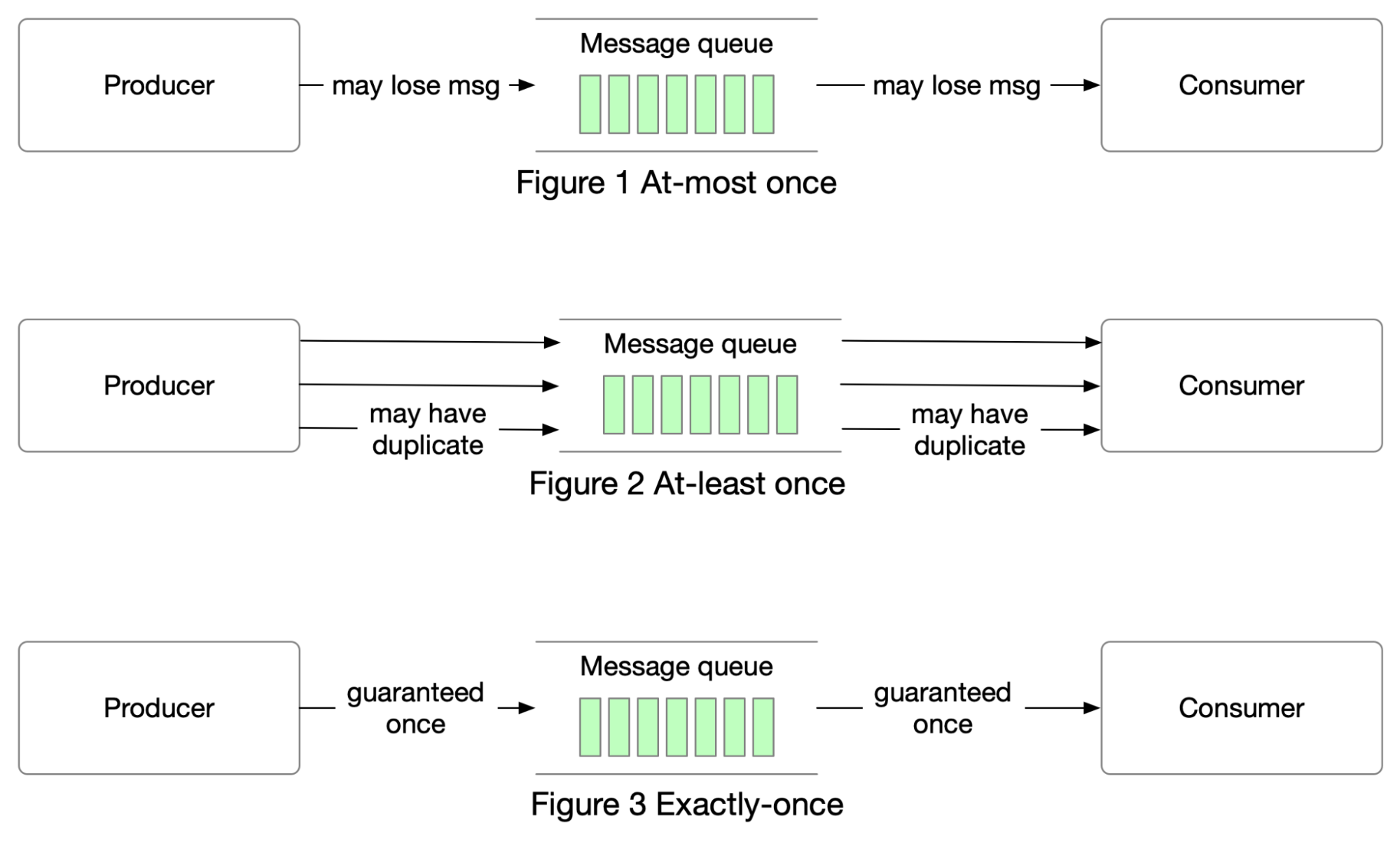Understand at-most once, at-least once, and exactly once delivery semantics.

In modern architecture, systems are broken up into small and independent building blocks with well-defined interfaces between them. Message queues provide communication and coordination for those building blocks. Today, let’s discuss different delivery semantics: at-most once, at-least once, and exactly once.
As the name suggests, at-most once means a message will be delivered not more than once. Messages may be lost but are not redelivered. This is how at-most once delivery works at the high level.
With this data delivery semantic, it’s acceptable to deliver a message more than once, but no message should be lost.
Exactly once is the most difficult delivery semantic to implement. It is friendly to users, but it has a high cost for the system’s performance and complexity.